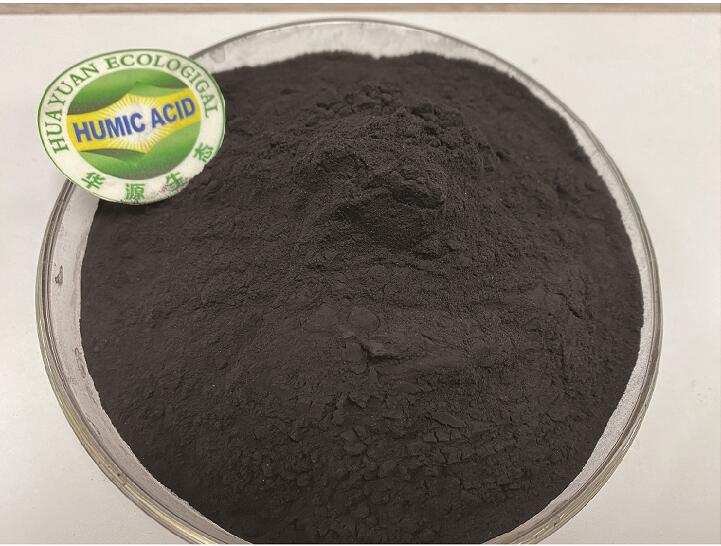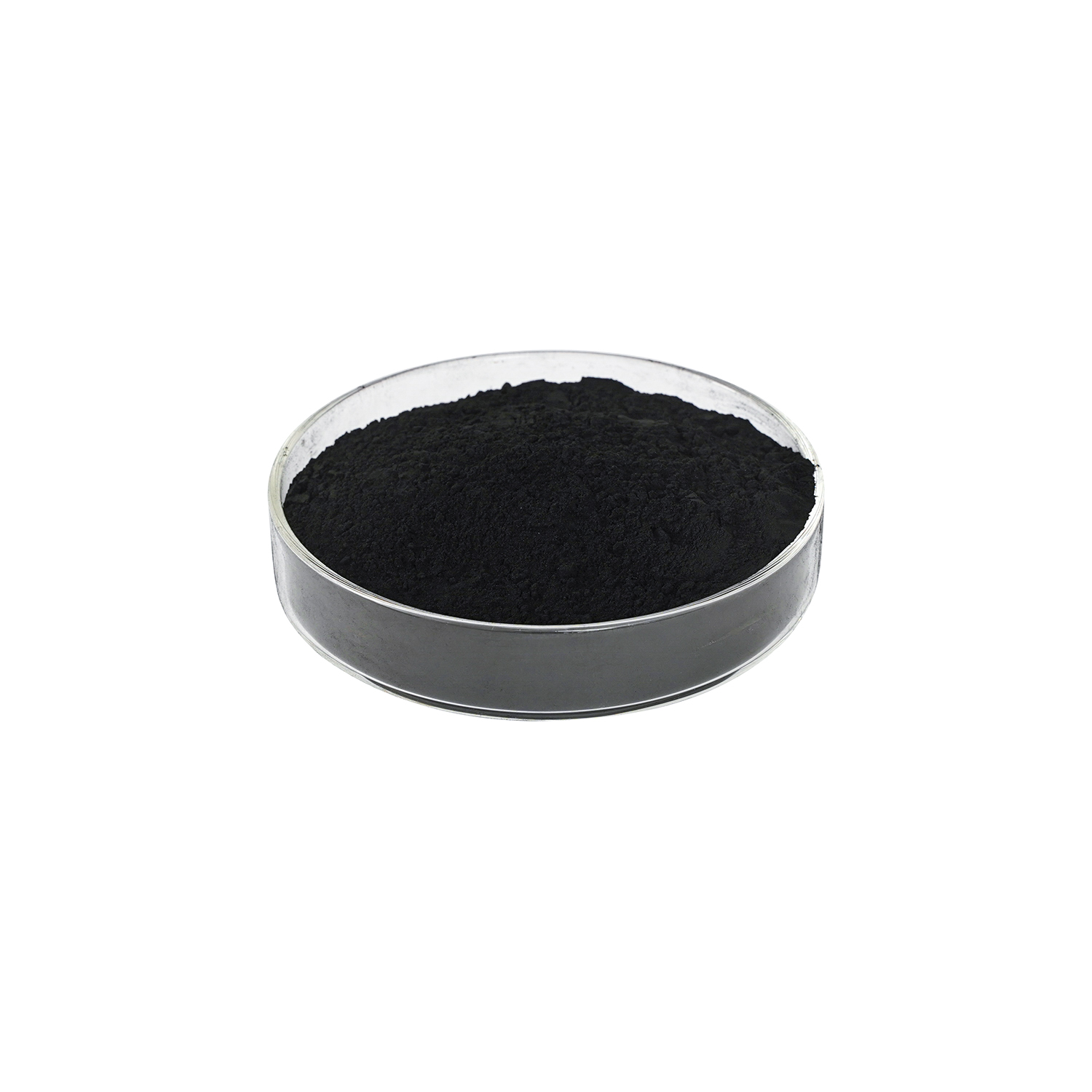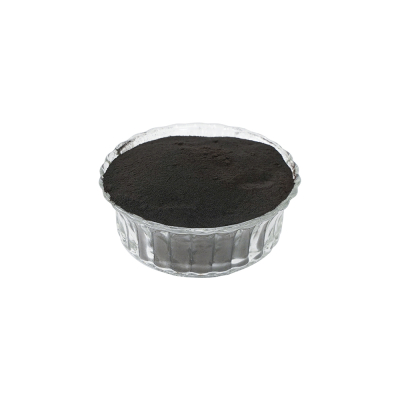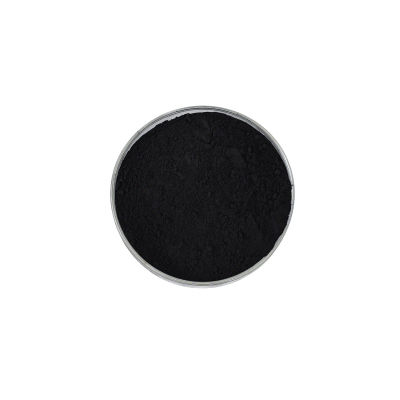Application of humic acid significantly improves cold resistance in 15 crops
Application of humic acid significantly improves cold resistance in 15 crops
Recently, a cold wave has affected China from west to east and from north to south, causing frost damage to flowering rapeseed, regreening wheat, field vegetables, fruit trees, and other crops. Numerous studies and applications have shown that functional products such as humic acid, humic acid fertilizers, and fulvic acid fertilizers can increase the content of free proline, soluble sugars, and soluble proteins in plants under low temperature stress, enhance the activity of antioxidant enzymes, and improve the cold resistance of crops. The research results on the application of humic acid series agricultural products in cold resistance in 15 crops are summarized below for everyone to share.
Anhui Agricultural University, Cheng Fujiu, et al., studied the physiological effects of humic acid on seed germination, nitrogen absorption, and cold resistance of rapeseed. The results showed that soaking with humic acid (FA) could effectively activate the activities of protease, peptidase, and acid phosphatase during rapeseed seed germination, increase seed germination index and vigor index, enhance nitrate reductase activity in seedlings, and promote nitrogen absorption. Under low-temperature stress, humic acid could enhance the activities of superoxide dismutase (SOD) and catalase (CAT) in rapeseed seedlings and increase ascorbic acid content, suppressing malondialdehyde (MDA) production, reducing cell electrolyte leakage, alleviating chlorophyll damage, maintaining cell physiological functions, increasing photosynthetic rate and root vigor, and significantly reducing respiration rate. [Source: Journal of Anhui Agricultural University, 1995, 22(2):123-128]
Zhu Xialing et al. from the Crop Institute of the Chinese Academy of Agricultural Sciences studied the effects of the transpiration inhibitor fulvic acid (FA) on the cold resistance physiology of winter wheat. The results showed that wheat leaves sprayed with FA had a relative membrane permeability 8.30 percentage points lower than the control, and the free proline content in the leaves increased by 17.55% compared to the control. The soluble sugar content in both the wheat leaves and tillering nodes was higher than the control. [Source: Beijing Agricultural Science, 1995(4):20-21]
Jin Ping from the Soil and Fertilizer Institute of Heilongjiang Academy of Agricultural Sciences studied the effects of humic acid on the cold resistance of rice. The results showed that under low-temperature stress, 300, 400, 600 mg/L humic acid could increase the proline content in rice by 3.0-28.8 μg/g·FW, increase the polyphenol oxidase activity by 0.08-0.34 mg·g·min, increase the abscisic acid content by 44.983-0.179 f·mol/g·FW, reduce rice membrane permeability by 1.86%-0.36%, decrease malondialdehyde content by 6.45-7.96 μmol/L·g·FW. The experiment confirmed that humic acid can indeed improve the cold resistance of rice. [Source: Journal of Northeast Agricultural University, 1997, 28(1):90-93]
Wu Haiyan from Northwest Normal University studied the effects of salicylic acid (SA), fulvic acid (FA), ethephon (S3307), acacia gum (LBG), ascorbic acid (ASA), potassium dihydrogen phosphate (KH2PO4), sea buckthorn water extract, and pine needle water extract on the physiological effects of corn seedlings under low temperature (5°C) stress. The results showed that under low-temperature stress, all eight exogenous substances could improve the cold resistance of corn seedlings. Different concentrations of the same exogenous substance had different effects on improving the cold resistance of corn seedlings; the physiological effects of different exogenous substances also varied, with the best cold resistance effect being S3307, followed by SA and FA. Based on four physiological indicators of freezing resistance index, chlorophyll content, SOD activity, and MDA content, the order of cold resistance strength and the optimal concentration were determined to be S3307 (0.06g/L) > SA (0.05g/L) > FA (0.6g/L) > LBG (1.2g/L) > KH2PO4 (3g/L) > ASA (3g/L) > pine needle water extract (0.005g/mL) > sea buckthorn water extract (0.005g/mL). [Source: Master's thesis, Northwest Normal University, 2015]
Qu Yan from Jilin University studied the physiological effects of artemisinin and potassium fulvic acid on physiological effects of naked barley seedlings under freeze-thaw and salinity-alkalinity stress. The results showed that under alkaline saline stress, soluble protein and MDA content in naked barley seedlings increased significantly (P<0.05), with MDA content increasing by 63.1% compared to the control group (CK), and SOD, POD activity, and photosynthetic rate all decreased. After freezing-thaw treatment, the soluble protein content in naked barley seedlings decreased, and the soluble protein content in the alkaline saline fulvic acid potassium freezing-thaw complex treatment group (FHK) was significantly higher than other freezing-thaw groups (P<0.05); the relative conductivity and MDA content in the FHK group were significantly lower than the alkaline saline freezing-thaw treatment group (FH) (P<0.05), enzyme activity in the FHK group was higher than the FH group, and all groups had decreased net photosynthetic rate. Compared to the control group without potassium fulvic acid, the addition of potassium fulvic acid mitigated the damage to naked barley seedlings caused by alkaline saline and freeze-thaw stress. Both salt-alkali and freeze-thaw stresses significantly damaged naked barley seedlings, and the combined stress of the two factors had a synergistic effect, but the addition of a small amount of artemisinin or potassium fulvic acid reduced this synergistic effect. The results of the study demonstrate that under short-term freeze-thaw combined stress, the addition of appropriate amounts of artemisinin and potassium fulvic acid can enhance the freeze and salt-alkali stress tolerance of naked barley. [Source: Master's thesis, Jilin University, 2022]
Shi Xuefen et al. from the Ordos Institute of Agriculture and Animal Husbandry Sciences in Inner Mongolia studied the effects of potassium fulvic acid application methods on the cold resistance and yield of winter fresh eating tomatoes in high-altitude areas. The results showed that using potassium fulvic acid could reduce the content of malondialdehyde in tomatoes, significantly improve the cold resistance of the plants, regulate the synthesis and accumulation of osmotic regulatory substances in tomato plants, enhance their adaptability to cold stress, and promote to some extent the increase in yield by 4.8% to 15.7% compared to the control. [Source: Journal of Northeast Agricultural University, 2023, 43(25):42, 45]
Kong Fanrong from the College of Horticulture, Shanxi Agricultural University, studied the effects of potassium fulvic acid on the growth and physiological and biochemical characteristics of zucchini seedlings under combined drought and low-temperature stress. The results showed that under combined drought and low-temperature stress, the dry weight, proline content, SOD, POD, CAT activities, and photosynthetic capacity of zucchini seedlings were all suppressed, and different concentrations of potassium fulvic acid treatment could alleviate the inhibitory effects of combined drought and low-temperature stress on the growth and physiological and biochemical indicators of zucchini seedlings. Among them, the 0.05% potassium fulvic acid treatment (T3) had the best effect, with leaf area, whole plant fresh weight, whole plant dry weight, proline content, SOD, POD, and CAT activity increasing significantly by 13.89%, 16.20%, 17.43%, 19.43%, 13.48%, 7.13%, and 16.28% respectively, while the MDA content decreased by 14.37%, and the total chlorophyll content and net photosynthetic rate increased significantly by 19.66% and 17.86%, and the leaf Fv/Fm, ΦPSⅡ, ETR, and qP increased significantly by 4.25%, 17.57%, 14.85%, and 14.01%, while Fo and NPQ decreased by 5.30% and 15.79%, thereby reducing the damage of combined drought and low-temperature stress to leaf photosynthetic organs. Overall, potassium fulvic acid can alleviate the inhibitory effects of combined drought and low-temperature stress on the growth and physiological and biochemical indicators of zucchini seedlings to a certain extent, with the effect of T3 being more significant. [Source: Shandong Agricultural Science, 2023. https://link.cnki.net/urlid/37.1148.S.20231228.1514.006]
Jia Lanxi from Northwest A&F University studied the effects of different exogenous substances and their combinations on the growth of watermelon seedlings under low temperatures. The results showed that treatment with potassium fulvic acid from mineral sources at appropriate concentrations (dilution of 5000-8000 times liquid) could increase the maximum photosynthetic efficiency of watermelon seedling leaves and root vigor at 10/7°C (day/night) low-temperature stress, increase seedling fresh weight, decrease leaf relative conductivity and malondialdehyde content, and enhance seedling cold resistance, with the treatment with the 7000 times diluted mineral potassium fulvic acid having the best effect. In field conditions with low temperatures, watermelon seedlings treated with seaweed sugar + potassium dihydrogen phosphate + mineral potassium fulvic acid + MeJA had reduced leaf conductivity, increased chlorophyll content, antioxidant enzyme activity, and root vigor, and increased fresh weight and root growth. [Source: Master's thesis, Northwest A&F University, 2023]
Yang Zhitao from Hebei Agricultural University studied the effects of exogenous humic acid on the growth and physiological characteristics of thick-skinned muskmelon seedlings under low-temperature stress. The results showed that under low-temperature stress, root irrigation combined with spraying appropriate concentrations of humic acid could enhance the biomass accumulation of thick-skinned muskmelon seedlings, promote chlorophyll content, photosynthetic characteristics, and fluorescence parameters, induce antioxidant enzyme activity and osmotic regulatory substance formation, increase root vigor of muskmelon seedlings, reduce malondialdehyde content and electrolyte leakage. Through the improvement of comprehensive indicators of aboveground and underground parts, the cold resistance of muskmelon seedlings was enhanced, thereby promoting the growth of muskmelon seedlings. The treatment with root irrigation at 200mg/L + foliar spray at 200mg/L had the best effect. [Source: Master's thesis, Hebei Agricultural University, 2022]
Diao Zheng from Sichuan Agricultural University studied the alleviating effects of exogenous ABA and humic acid on the cold stress of ground cover bamboo. The results showed that the combined treatment with humic acid (HA) could further improve the alleviating effect of exogenous ABA on the cold stress of ground cover bamboo, synergistically facilitating the stress relief effects of ABA. In terms of cold resistance comprehensive evaluation, the treatment of 12.5mg/L ABA / 80mg/L HA was the best in improving the comprehensive cold tolerance of ground cover bamboo under low-temperature stress. In terms of landscape quality, the treatments with 12.5mg/L ABA and 60-80mg/L HA were most effective in alleviating the morphological damage of ground cover bamboo under winter low-temperature stress. [Source: Master's thesis, Sichuan Agricultural University, 2019]
Sun Jingkai from Shandong Agricultural University studied the effects of mineral humic acid and biochemical humic acid on the growth, development, and cold resistance of moth orchids. The results showed that the application of 25-100mg/L mineral humic acid (M) and 12.5-50mg/L biochemical humic acid (B) could alleviate the cold damage symptoms of moth orchid leaves, with the best effects seen with M1 (25mg/L) and B1 (12.5mg/L), followed by M2 (50mg/L) and B2 (25mg/L). The application of 25-100mg/L mineral humic acid and 12.5-50mg/L biochemical humic acid could reduce the relative conductivity and MDA content of moth orchid leaves under low-temperature stress, increase the SOD enzyme activity, CAT enzyme activity, soluble sugar content, soluble protein content, carotenoid content, and chlorophyll content of moth orchid leaves during low-temperature stress, with the most effective concentrations being M1 (25mg/L) and B1 (12.5mg/L), followed by M2 (50mg/L) and B2 (25mg/L). The application of mineral humic acid and biochemical humic acid could significantly promote the growth and development of moth orchids, improve flowering quality and cold resistance, with the most suitable concentration for mineral humic acid being 25mg/L and for biochemical humic acid being 12.5mg/L. [Source: Master's thesis, Shandong Agricultural University, 2022]
Zhang Caifeng from Taiyuan Normal University's Chemistry Department studied the effects of foliar spraying of potassium humic acid on the physiological and biochemical parameters of hibiscus under low-temperature stress. The results showed that foliar spraying of potassium humic acid effectively increased the activity of protective enzymes (SOD, CAT) in plant cells under low-temperature stress, reduced the production of MDA, and weakened the decrease in transpiration rate, stomatal conductance, and net photosynthesis rate of plants after low-temperature stress. Among them, humic acid potassium extracted from oxidized Inner Mongolian lignite after nitric acid treatment and dry humic acid potassium had the most significant effects; humic acid potassium extracted from oxidized Inner Mongolian lignite after nitric acid treatment and dry humic acid potassium could effectively enhance the cold resistance of hibiscus. [Source: Shanxi Agricultural Science, 2015, 43(2):167-171, 191]
Chen Changming et al. from the Agricultural Science Research Institute of Sanming City, Fujian Province, studied the inhibitory effects of exogenous substances potassium nitrate, Flower Plus, humic acid, and urea on low-temperature flowering in pineapple. The results showed that after application of potassium nitrate, Flower Plus, humic acid, and urea, the leaves of pineapple could maintain normal growth, the MDA content in the leaves was lower than the control, and the number of flowers decreased to varying degrees; among them, the application of a 2000-fold dilution of humic acid was most effective in inhibiting the low-temperature flowering of pineapples, with a flowering rate of only 16.7%. [Source: Southeast Horticulture, 2016, 4(4):1-4]
Lu Mei from Fujian Forestry Vocational and Technical College studied the effects of humic acid eucalyptus organic special fertilizer on cold resistance promotion of Dennen eucalyptus. The results showed that the use of the organic special fertilizers reduced the freezing rate, freezing injury level, and freezing injury index of the forest by 23.9%-43.5%, 25.0%-50.5%, and 32.4%-49.7%, respectively, compared to the conventional fertilizer treatment; the growth indicators of the forest, such as tree height, diameter at breast height, crown width, and timber volume, were also improved by 6.3%-26.6%, 14.7%-37.2%, 6.5%-18.8%, and 42.9%-136.7%, respectively. Among them, the best effect was seen with the base fertilizer of 500g/plant of humic acid eucalyptus special fertilizer + 10g/plant of composite microbial agent and the top dressing of No. 2 special fertilizer of 500g/plant in improving the cold resistance and promoting growth, which is a better fertilization model for the northern region of Fujian Province. [Source: Journal of Zhejiang Forestry College, 2006, 23(5):501-506]
Wen Qiuming et al. from the State Key Laboratory of Biochemical Engineering, Institute of Process Engineering, Chinese Academy of Sciences, compared the effects of black liquor and inorganic fertilizers on the cold resistance of orchard foxtail millet. The results showed that black liquor with a humic acid content of 5.3% and inorganic fertilizers improved the cold resistance training effect of foxtail millet to varying degrees. Inorganic fertilizers significantly promoted the accumulation of free proline (Fpro) in foxtail millet leaves, with a maximum content of 868.95 μg/g. Black liquor significantly increased the SOD activity and WSS content in foxtail millet leaves, with maximum values of 201.16 U/g and 137.15 μg/g, respectively. Inorganic fertilizers delayed the green period of the lawn by about 10 days, while black liquor treatment extended the lawn by 40 days. Compared to inorganic fertilizers, black liquor significantly improved the cold resistance of foxtail millet and maintained high lawn ornamental value. [Source: Grassland Science, 2011, 28(1):47-52]





